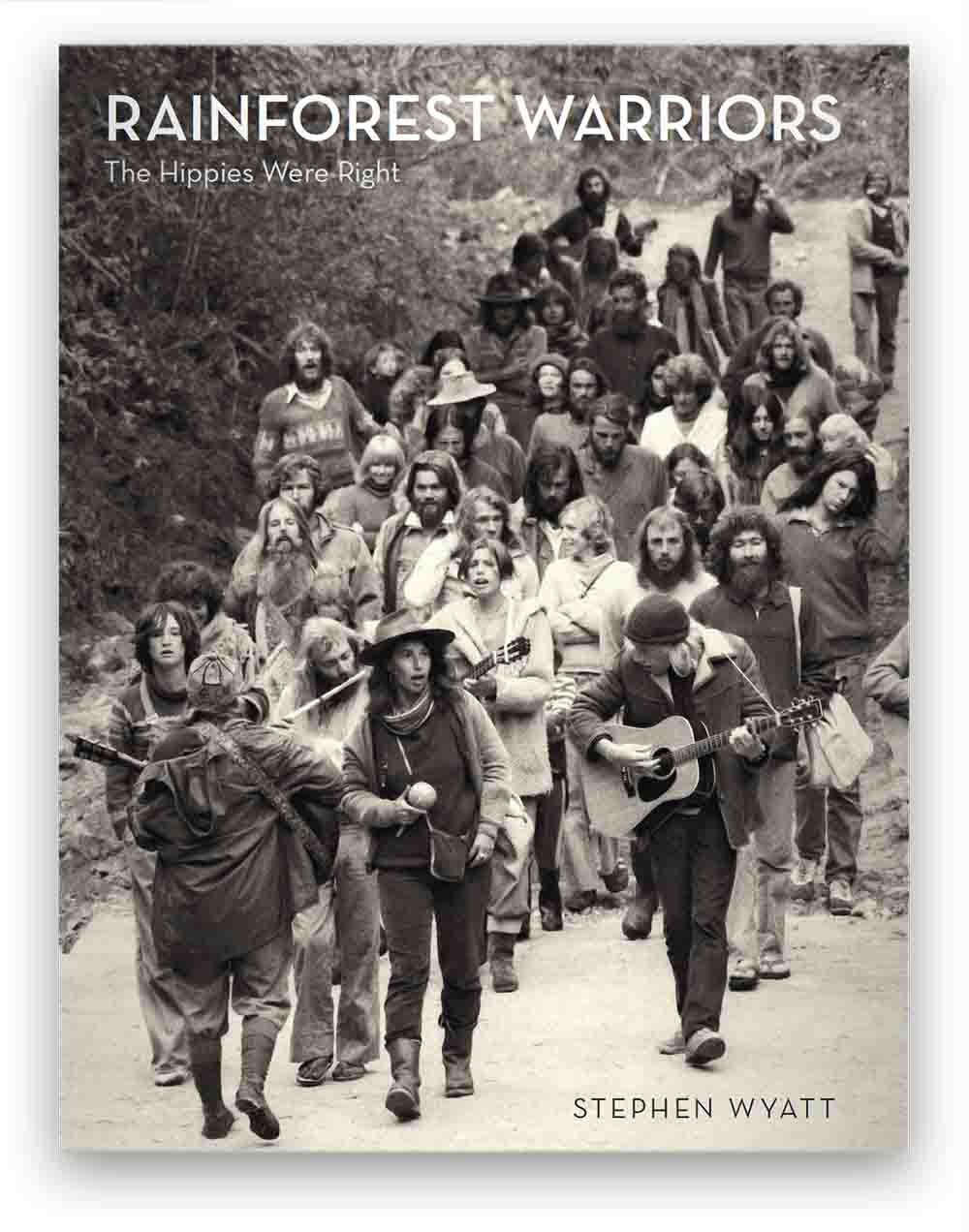
RAINFOREST WARRIORS
At the heart of the Forest Wars were the ancient Gondwanan Antarctic rainforests: rare, complex and valuable.
OVER 100 IMAGES
184 PAGES
“Naked, immersed in nature and ready to fight for the forests, the hippies, the ‘back to earthers’ and the Bundjalung mobilised, took on the government and loggers and beat them. This was the first ever blockade in Australia – a momentous event.”
SAMPLE PAGES







RAINFOREST WARRIORS
-
This is a story of extraordinary cultural change in the Byron hinterland in the 1970s and how that led to Australia’s first ever fight against environmental destruction – a fight that resulted in undreamt of success – the creation of national parks down the spine of the state.
It set the scene for environmental action for decades thereafter: at the Franklin in Tasmania, in the Daintree, coal seam gas blockades and internationally.
The story starts with the rich subtropical rainforests of Northern NSW – a place of spiritual significance and sustenance for the Bundjalung people. It explains the history of these ancient forests, their complexity and importance. Then it tells the tale of destruction.
Logging from the 1830s and then clearing for farming left just one per cent of the rainforests in the region. It was devastating. The Bundjalung had no say. Their country was destroyed.
But in the 1970s destruction gave way to renewal.
The hippies arrived. The counter culture surged. The Aquarius Festival in Nimbin was held in 1973. Many Festival goers were changed forever, many stayed. At the same time, the “back- to-the-earthers” settled in the area, communes were created. There were 94 at one stage. Sixty still exist.
Suddenly there was a critical mass of people who wanted to live with nature, not witness its destruction.
The War to stop logging was seeded. And war actually broke out in 1979 at Terania Creek, inland from Byron Bay. Never before had activists confronted loggers, bulldozers and police.
Everyone was confused.
It was all new. A camp was built, hundreds gathered. Blockading tactics had to be invented.
Then came the next war at Mt Nardi near Nimbin.
This finally triggered Government action to not just halt the logging of rainforests forever but to create a vast number of National Parks. It turned the Labor Government green.
Bob Carr said Terania and Mount Nardi blockades “... provided a political model. It was an alliance of the Labor Party and nature conservationists” (interview Wyatt).
The book also looks at a new relationship between these new arrivals and the local Bundjalung people.
At the Aquarius Festival, the first ever Welcome to Country was offered by indigenous Australians to the new white Australians.
The town of rainbow-painted Nimbin has forever changed and the legacies of the blockades are ongoing – continued activism.
The book includes a series of interviews with the activists.
-
Introduction
The Big Scrub and Gondwana
Aquarius
The War
The Second War and the Politicians (Carr is interviewed)
The Victory
The PLAYERS (all interviews)
The Saviours - Hugh and Nan
The Festival Radical - Graeme Dunstan
The Psychiatrist – Dr Harry Freeman
The Community Creator - Carol Perry
The Visionary - Dudley Leggett
An early community - Dharmananda
Community and Leigh
The Internationalist – John Seed
The Mullum GP – Dr David Miller
Scary Grannies – The Knittng Nannas
Ganges to The Channon - Bodhi Farm and Gai
Bundjalung Country - dispossession then some respect.
ABOUT THE AUTHOR
Stephen Wyatt lives in Byron Bay on 10 acres of regenerated Big Scrub rainforest with his partner Colleen Ryan. He initially worked as a development economist in Papua New Guinea, then moved to London to work in markets.
He joined a US investment bank and returned to Australia.
At 40 years of age he saw the light and became a journalist.
He wrote about commodity markets and economics for the (London) Financial Times and the Australian Financial Review (AFR). His last journalistic gig was in a joint posting with his wife, Colleen Ryan, as the AFR’s China correspondent.
This posting lasted 6 years, from 2004–2010.
He and Colleen then moved permanently to Byron Bay. They had planted the rainforest in the 1990s. It has matured well, as have their two, now adult, children.






